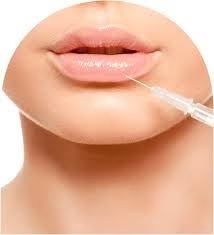In the beauty and aesthetics world, few treatments have revolutionized non-surgical cosmetic enhancement as much as dermal fillers. From subtle lip augmentation to restoring youthful contours, fillers have become a cornerstone of modern aesthetic medicine. The growing demand for cosmetic injectables has also transformed how professionals and consumers purchase these products. Today, more people are exploring how to buy dermal fillers online USA safely, efficiently, and ethically.
This comprehensive guide walks you through everything you need to know — from the types of dermal fillers available and the proper buying process, to the latest trends and regulations shaping the American market. Whether you are a licensed practitioner or an informed consumer researching your options, this tutorial-style article will help you navigate the world of online dermal filler purchases in 2025.
1. Understanding Dermal Fillers: What They Are and How They Work
Before diving into where and how to buy dermal fillers online, it’s crucial to understand what these products are. Dermal fillers are injectable substances designed to restore lost volume, smooth wrinkles, and enhance facial features. They are typically made from biocompatible materials that can integrate seamlessly into human tissue.
Main Types of Dermal Fillers:
- Hyaluronic Acid (HA) Fillers
The most popular category includes brands like Juvederm, Restylane, and Belotero. Hyaluronic acid is a naturally occurring substance in the skin that retains moisture and provides elasticity. HA fillers are reversible, making them a favorite for both beginners and experienced injectors. - Calcium Hydroxylapatite (CaHA) Fillers
Known by brands like Radiesse, this type stimulates collagen production while providing immediate volume. It’s often used for deeper lines and facial contouring. - Poly-L-Lactic Acid (PLLA) Fillers
Products such as Sculptra fall into this category. Rather than simply filling wrinkles, they stimulate collagen production over time, offering gradual and long-lasting results. - Polymethylmethacrylate (PMMA) Fillers
PMMA microspheres (used in products like Bellafill) offer semi-permanent correction, particularly for deep wrinkles and acne scars.
Each filler has unique properties, longevity, and applications. Understanding these distinctions helps ensure that online purchases align with professional treatment goals and patient safety standards.
2. The Rise of Online Purchasing in the Aesthetic Industry
Over the last decade, the digital transformation of the medical aesthetics market has reshaped purchasing behavior. Clinics, dermatologists, and even certified nurse injectors increasingly turn to online platforms for ordering medical supplies, including dermal fillers.
This trend gained momentum after the COVID-19 pandemic, as clinics sought contactless purchasing and faster restocking. E-commerce technology has made it possible for professionals to compare products, read verified reviews, and access bulk discounts — all without intermediaries.
However, with opportunity comes risk. The online marketplace also attracts counterfeiters and unauthorized distributors, making product verification a top concern. Regulatory bodies like the FDA and U.S. Customs and Border Protection have heightened oversight of imported cosmetic injectables. Understanding these dynamics is crucial for anyone planning to buy dermal fillers online in the USA.
3. Tutorial: How to Buy Dermal Fillers Online in the USA — Step-by-Step
Purchasing dermal fillers online safely requires more than just selecting a product. It’s about following proper procedures, verifying suppliers, and ensuring compliance with local laws. Here’s a detailed tutorial on how to approach the process responsibly.
Step 1: Verify Licensing and Eligibility
In the United States, dermal fillers are classified as medical devices. That means they should be purchased and administered only by licensed medical professionals, such as dermatologists, plastic surgeons, registered nurses, or physician assistants operating under supervision.
Before ordering online, verify your professional credentials with the supplier. Reputable distributors will request proof of license — a good sign of authenticity.
Step 2: Research Trusted Distributors
Choose suppliers with a proven record of sourcing directly from authorized manufacturers or wholesalers. Look for indicators such as:
- Positive verified reviews from licensed practitioners
- Clear business address and customer service contact
- Transparency about sourcing and product authenticity
- Secure online payment methods and traceable shipping
Avoid any vendor offering “too-good-to-be-true” prices or unmarked packaging. These are common red flags for counterfeit products.
Step 3: Understand Product Specifications
Every dermal filler has unique characteristics — viscosity, particle size, injection depth, and intended treatment area. Before purchasing, carefully read the product description and technical data sheets. If you are new to a specific brand, consult with the manufacturer or attend professional training sessions before use.
Step 4: Ensure Cold Chain Storage and Shipping Integrity
Dermal fillers online must be stored under controlled temperature conditions, typically between 2°C and 25°C. Reputable suppliers use insulated packaging and temperature indicators during shipping. Always check the package upon arrival for damage, leaks, or signs of tampering.
Step 5: Keep Documentation
Maintain records of invoices, lot numbers, and expiration dates. These documents are vital for quality control, warranty claims, and patient safety tracking.
Step 6: Report Any Suspicious Activity
If you suspect a counterfeit or unauthorized product, report it to the FDA’s MedWatch program. This helps protect others in the industry and supports market integrity.
4. News Insight: The U.S. Dermal Filler Market in 2025
The U.S. aesthetic injectables market has experienced a significant boom, fueled by both technological innovation and shifting beauty standards. According to recent industry analysis, dermal filler procedures increased by over 20% in the past two years, reflecting growing demand across all age groups and genders.
Key Market Trends:
- Rise of “Preventive Aesthetics”
Millennials and Gen Z are adopting dermal fillers earlier as part of preventive anti-aging strategies, focusing on subtle enhancement rather than correction. - Digital Expansion and Direct Sourcing
Online purchasing platforms are becoming more sophisticated, offering AI-assisted recommendations, bulk order management, and real-time stock tracking. - Regulatory Tightening
The FDA continues to emphasize traceability and safety, cracking down on unauthorized imports. U.S. Customs has seized thousands of counterfeit filler syringes from unverified international sellers since 2023. - Innovation in Product Longevity
New formulations are achieving longer-lasting results — up to 24 months for certain HA-based fillers — reducing maintenance frequency and enhancing patient satisfaction.
These developments show a dynamic, evolving marketplace that rewards knowledge and caution in equal measure.
5. Common Mistakes When Buying Dermal Fillers Online
Even experienced professionals can make missteps when sourcing cosmetic injectables online. Here are the most common pitfalls — and how to avoid them:
- Buying from Unverified Sellers
Some websites mimic legitimate distributors but deliver unregulated or diluted products. Always cross-check distributor names with the official brand manufacturer’s authorized list. - Ignoring Expiration Dates
Expired fillers can lose efficacy and increase the risk of complications such as granulomas or inflammation. - Skipping Batch Verification
Every filler should include a lot number traceable to the manufacturer. Lack of one is a major red flag. - Storing Products Improperly
Exposure to heat or freezing conditions can degrade the product before use. Use a medical-grade refrigerator if needed. - Failing to Follow FDA Guidelines
Using unapproved imported fillers can result in legal consequences and professional liability.






